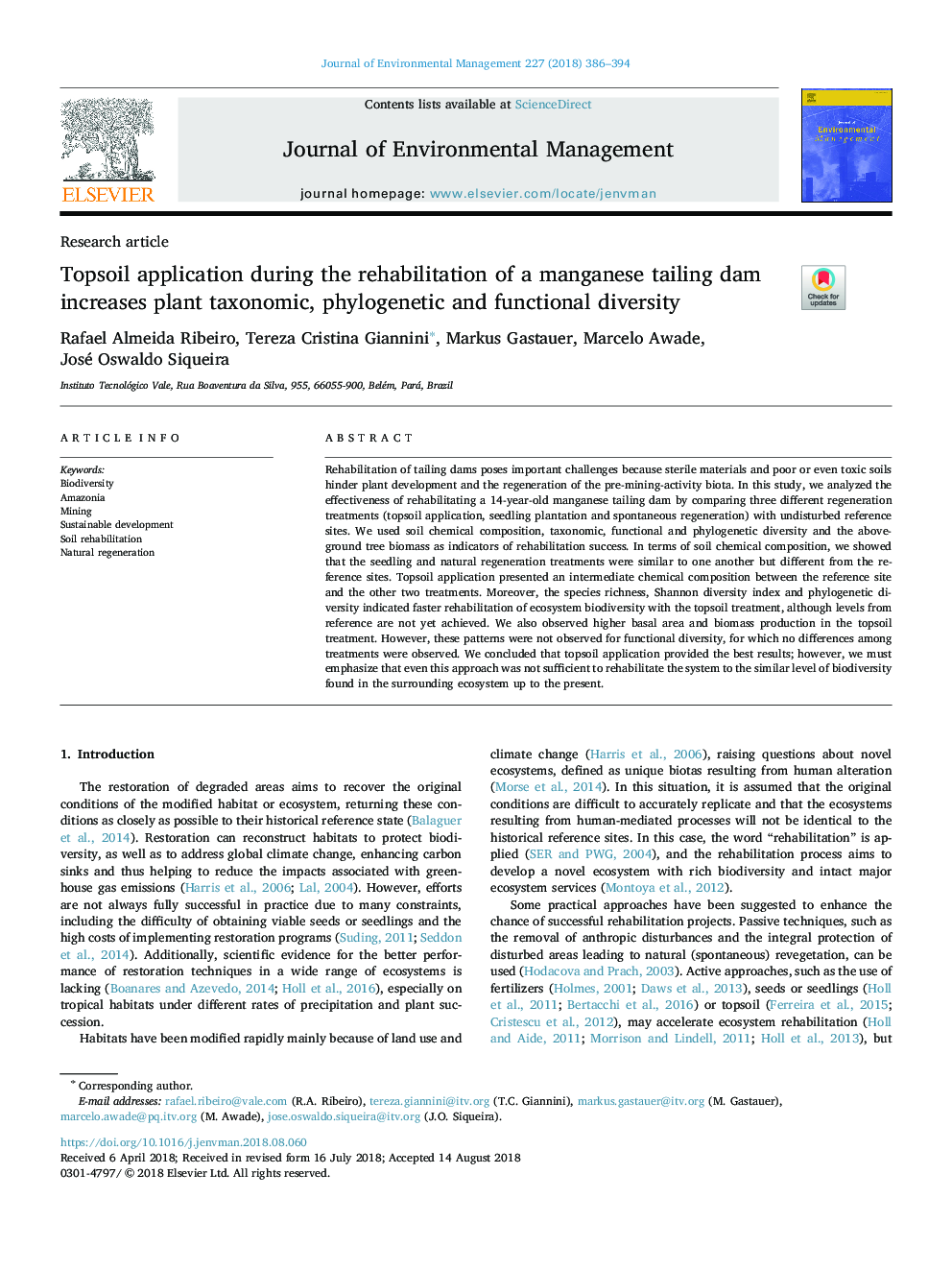| Article ID | Journal | Published Year | Pages | File Type |
|---|---|---|---|---|
| 10140650 | Journal of Environmental Management | 2018 | 9 Pages |
Abstract
Rehabilitation of tailing dams poses important challenges because sterile materials and poor or even toxic soils hinder plant development and the regeneration of the pre-mining-activity biota. In this study, we analyzed the effectiveness of rehabilitating a 14-year-old manganese tailing dam by comparing three different regeneration treatments (topsoil application, seedling plantation and spontaneous regeneration) with undisturbed reference sites. We used soil chemical composition, taxonomic, functional and phylogenetic diversity and the above-ground tree biomass as indicators of rehabilitation success. In terms of soil chemical composition, we showed that the seedling and natural regeneration treatments were similar to one another but different from the reference sites. Topsoil application presented an intermediate chemical composition between the reference site and the other two treatments. Moreover, the species richness, Shannon diversity index and phylogenetic diversity indicated faster rehabilitation of ecosystem biodiversity with the topsoil treatment, although levels from reference are not yet achieved. We also observed higher basal area and biomass production in the topsoil treatment. However, these patterns were not observed for functional diversity, for which no differences among treatments were observed. We concluded that topsoil application provided the best results; however, we must emphasize that even this approach was not sufficient to rehabilitate the system to the similar level of biodiversity found in the surrounding ecosystem up to the present.
Related Topics
Physical Sciences and Engineering
Energy
Renewable Energy, Sustainability and the Environment
Authors
Rafael Almeida Ribeiro, Tereza Cristina Giannini, Markus Gastauer, Marcelo Awade, José Oswaldo Siqueira,
